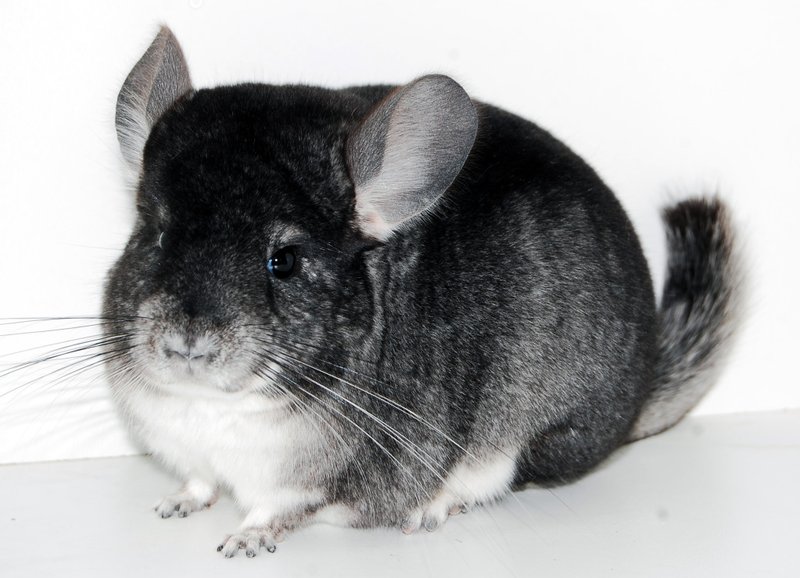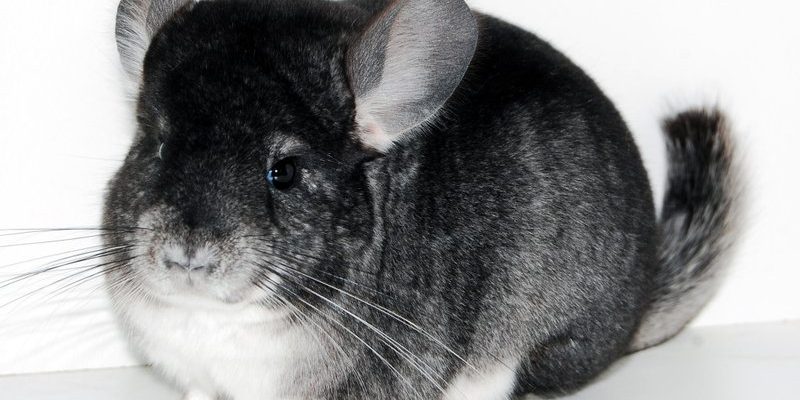
So, what makes black velvet chinchillas stand out? They have a rich, dark fur that feels soft as a cloud—almost like petting velvet. But looks aren’t everything; their breeding and genetic background play a big role in determining traits like color, size, and temperament. Let’s dive into this world of chinchilla genetics together and uncover what makes these animals so special.
What Are Black Velvet Chinchillas?
Before we go deep into breeding and genetics, let’s establish what black velvet chinchillas are. They’re a color variation of the standard chinchilla, often characterized by their stunning, dark fur. The black velvet coat is a result of specific genes interacting in a way that gives it that luxurious appearance.
In the chinchilla world, fur colors can range from white to gray to various shades of black. Black velvets are a product of selective breeding, where breeders aim for specific coat characteristics. While they may look quite similar to other chinchillas, their unique pigmentation sets them apart—not just visually, but in how they might behave, too.
The Genetics Behind Black Velvet Chinchillas
Genetics can seem complicated, but let’s break it down. At its core, the black velvet color comes from a specific gene known as the “black gene.” This gene influences the production of pigment in their fur, leading to the rich, dark coloration that black velvets are known for.
When breeding chinchillas, you want to control for various traits—color, size, and even behavior. Each chinchilla carries two copies of each gene (one from each parent), which means combinations can create unique outcomes. For instance, if you breed two chinchillas that both have the black velvet gene, there’s a strong chance their offspring will inherit that dark, beautiful fur.
How Breeding Influences Traits
Breeding chinchillas isn’t just about producing more furry companions; it’s an art that influences their physical and behavioral traits. For example, a breeder may select for characteristics such as fur density or even personality traits like friendliness. This selective process can take time and requires a clear understanding of genetics.
When breeding black velvets, it’s essential to pair them with other chinchillas that complement their genes. If you’re aiming for a certain outcome, like certain coat colors or sizes, you need to pay attention to the traits both parents carry. Here’s a quick overview:
- Coat Color: The more you understand about dominant and recessive genes, the better you can predict the colors of the offspring.
- Size: While most chinchillas are similar in size, genetics can impact dimensions and body shape.
- Behavior: Some breeds might have a more laid-back personality, while others could be more playful or skittish.
Common Breeding Challenges
Breeding chinchillas can come with its own set of challenges. One common issue is the risk of genetic disorders, which can arise when there’s too much inbreeding. Just like you wouldn’t want to eat the same dish every day, breeders should strive for diversity to keep the gene pool healthy.
Another challenge is understanding the genetics behind color variations. Sometimes, breeding two black velvets will yield unexpected colors, like gray or white, due to the recessive genes hiding under the surface. This unpredictability can be frustrating but is a part of the genetic lottery.
Best Practices for Breeding Black Velvet Chinchillas
If you’re interested in breeding black velvet chinchillas, following best practices is vital for success. Here’s a quick checklist to help you start on the right path:
- Research: Understand the genetics before you start breeding. Familiarize yourself with dominant and recessive traits.
- Diverse Pairing: Choose pairs that will promote genetic diversity to avoid health issues.
- Health Monitoring: Regular veterinary check-ups ensure that both parents and offspring are healthy.
Strong genetics can lead to healthy, vibrant chinchillas ready for loving homes.
The Importance of Genetic Testing
You might be wondering, “Is genetic testing really necessary?” The short answer is yes! Just like humans, chinchillas can carry genetic markers that lead to various health concerns. By performing genetic tests, you can identify potential issues and choose your breeding pairs wisely.
Genetic testing can reveal whether a chinchilla carries genes for specific colors, diseases, or traits. Here’s how it benefits breeders:
- Informed Decisions: Knowing a chinchilla’s genetic background allows you to make smarter breeding choices.
- Health Awareness: Address any potential health risks before they become problems.
- Predictable Outcomes: With genetic insight, you can better anticipate the traits of the offspring.
Breeding and understanding the genetics of black velvet chinchillas isn’t just about creating beautiful pets. It’s about enhancing their lives and ensuring they remain healthy and happy. Just like crafting your favorite dish, it takes patience, knowledge, and a touch of creativity to get it right.
Whether you’re a seasoned breeder or just starting, remember that each chinchilla is unique, shaped by the genes of its ancestors and the care you provide. By diving into the world of chinchilla genetics, you open the door to a richer understanding of these enchanting creatures. So, go ahead and enjoy the journey—it’s a rewarding one!

